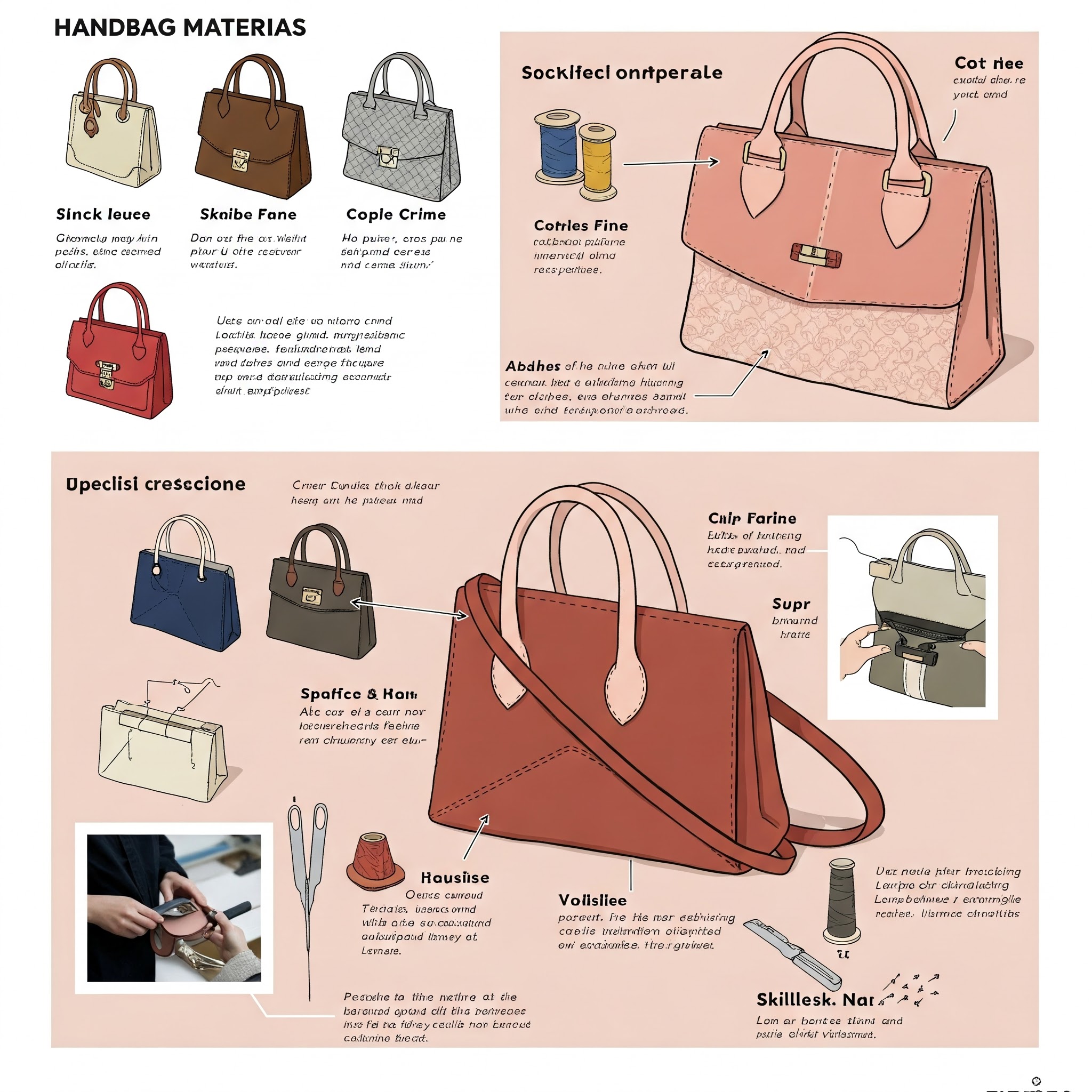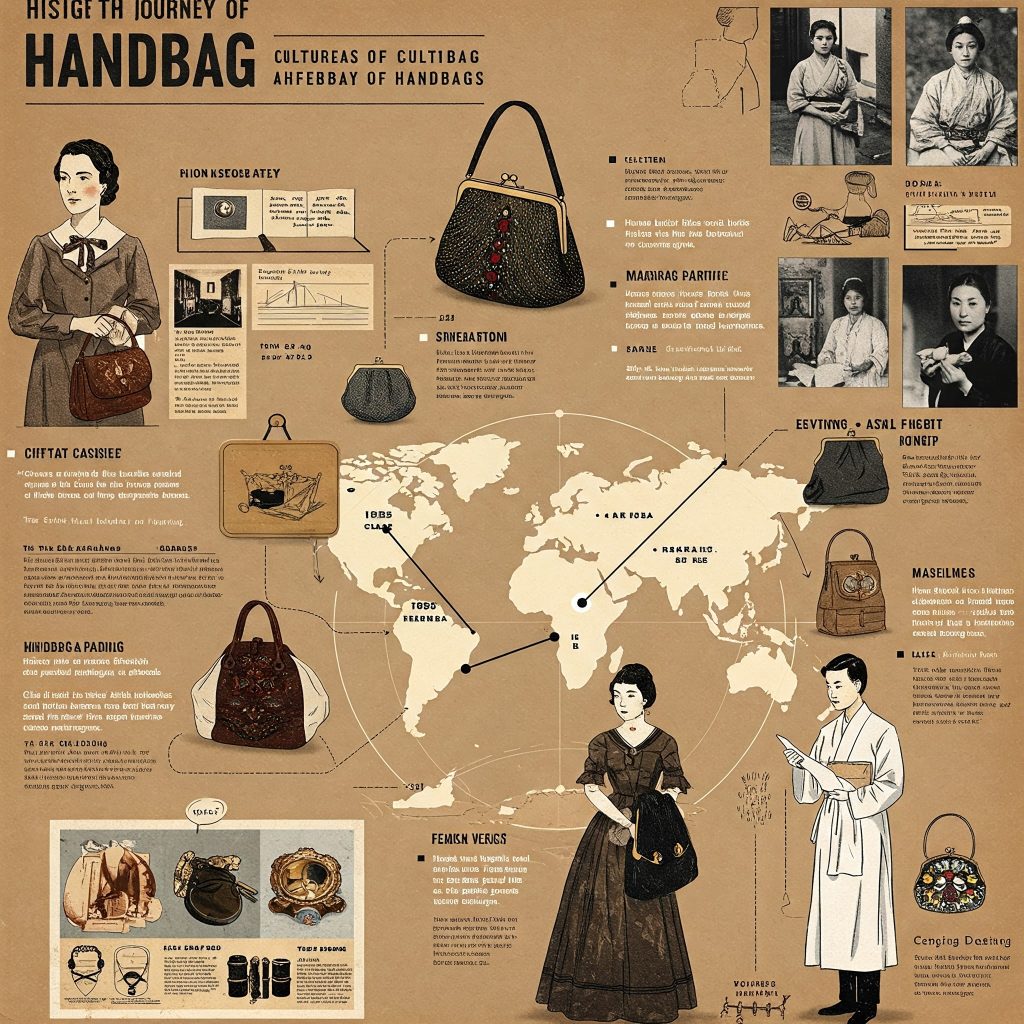Introduction
- Hook: Begin with a sensory description of a luxurious handbag, emphasizing its texture, smell, and visual appeal.
- Introduce the idea that the quality and longevity of a handbag are deeply rooted in its materials and construction.
- Thesis statement: This article will delve into the diverse world of handbag materials, the intricacies of craftsmanship, and the key elements of sturdy and well-designed construction.
The Foundation: Exploring Handbag Materials
- Leather:
- Different types of leather (cowhide, lambskin, exotic leathers) and their unique characteristics.
- Tanning processes and their impact on leather quality and durability.
- Sustainability considerations in leather production.
- Synthetic Materials:
- PVC, polyurethane, and other vegan leather alternatives.
- Their advantages (cost-effectiveness, water resistance) and disadvantages (durability, environmental impact).
- Innovations in sustainable synthetic materials.
- Textiles:
- Canvas, nylon, silk, and other fabric options.
- Their varying levels of durability, weight, and aesthetic appeal.
- The use of coated and treated textiles for enhanced functionality.
The Art of Making: Understanding Handbag Craftsmanship
- Cutting and Sewing:
- The importance of precise pattern making and cutting.
- Different stitching techniques (hand-stitching vs. machine stitching) and their impact on strength and aesthetics.
- Reinforcement of stress points.
- Hardware:
- The role of high-quality zippers, clasps, buckles, and chains.
- Different metal finishes and their durability.
- The impact of hardware on the overall look and functionality of the bag.
- Finishing Touches:
- Edge painting, lining, and other details that contribute to the bag’s overall quality and appearance.
- Quality control processes.
Building to Last: Key Elements of Handbag Construction
- Structure and Shape:
- The use of internal frames and reinforcements to maintain the bag’s shape.
- Different construction methods (e.g., framed, soft-bodied).
- Straps and Handles:
- Secure attachment methods and their importance for carrying weight.
- Adjustable and detachable strap options.
- Compartments and Organization:
- Thoughtful design of interior pockets and dividers for functionality.
- The importance of secure closures.
Conclusion
- Summarize the key aspects of materials, craftsmanship, and construction that contribute to a high-quality handbag.
- Emphasize the value of understanding these details for making informed purchasing decisions and appreciating the artistry involved.



